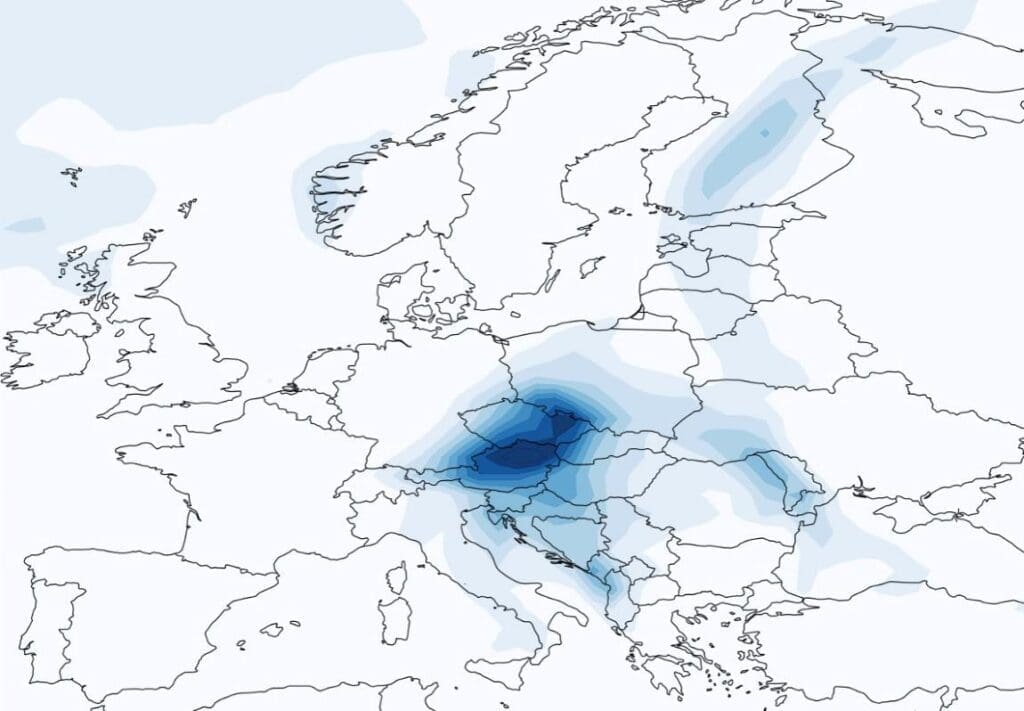Climate change is likely to drive tree species towards colder and wetter regions of their geographical distribution, a new study has shown.
The research, led by the University of Alcalá (UAH), in Spain, and including researchers at the University of Birmingham, draws together data from across Europe and North America to show that tree species in the Northern Hemisphere are starting to become denser in colder and wetter regions.
The study, published in Proceedings of the National Academy of Sciences (PNAS) provides the first quantitative evidence that climate change is driving this change in the numbers of trees of each species across temperate forests on a continental scale.
The researchers analyzed data from over two million trees, representing 73 species widely distributed across Europe and the United States. They investigated whether changes in tree density could be attributed to specific characteristics of each species, such as tolerance to arid conditions, or their capacity to disperse. Importantly, however, the study did not identify any single trait of the tree species as being decisive for these changes.
“This lack of a definitive trait suggests that most species possess a degree of acclimation capability,” says Julen Astigarraga, from UAH and lead author of the study.
Understanding how forest species are responding to climate change through increasing their density in these more northerly regions is essential for planning ecosystem conservation, management and restoration.
“Some tree species which are currently used for ecosystem restoration in Europe may no longer be suitable in these regions in the near future,” says co-author Dr Thomas Pugh, of the University of Birmingham and Lund University. “In addition, massive reforestation programmes planned as a solution for capturing and storing carbon dioxide from the atmosphere might be limited in their effectiveness if they do not account for these responses.”
The study represented a significant international collaboration, with scientists from 12 countries, and data analysis from more than 125,000 forest plots across Europe and North America.
Adriane Esquivel Muelbert, an expert in forest ecology at the University of Birmingham and co-author on the paper, said: “This study required a significant international effort to pull together and harmonise data from many different sources. The data from these forest inventories is crucial for advancing our understanding of forest dynamics and their resilience to climate change.”
The study was funded by the Spanish Ministry of Science and Innovation, and by the European Research Council’s TreeMort project. It included data and analysis from the Spanish National Forest Inventory, the Flemish Forest Inventory, the CzechTerra Landscape Inventory, the Finnish Forest Health Monitoring Network, the Dutch Forest Inventory, the Polish National Forest Inventory, the Swedish National Forest Inventory, and the United States Forest Service Forest Inventory and Analysis research program.
The University of Birmingham is ranked amongst the world’s top 100 institutions. Its work brings people from across the world to Birmingham, including researchers, teachers and more than 8,000 international students from over 150 countries.
More information: Julen Astigarraga, Adriane Esquivel-Muelbert, Paloma Ruiz-Benito , Thomas A. M. Pugh et al., ‘Relative decline in density of Northern Hemisphere tree species in warm and arid regions of their climate niches’, PNAS (121 28 e2314899121; 2024); DOI: 10.1073/pnas.2314899121. University of Birmingham Press Release. Featured image credit: Lukasz Szmigiel | Unsplash




